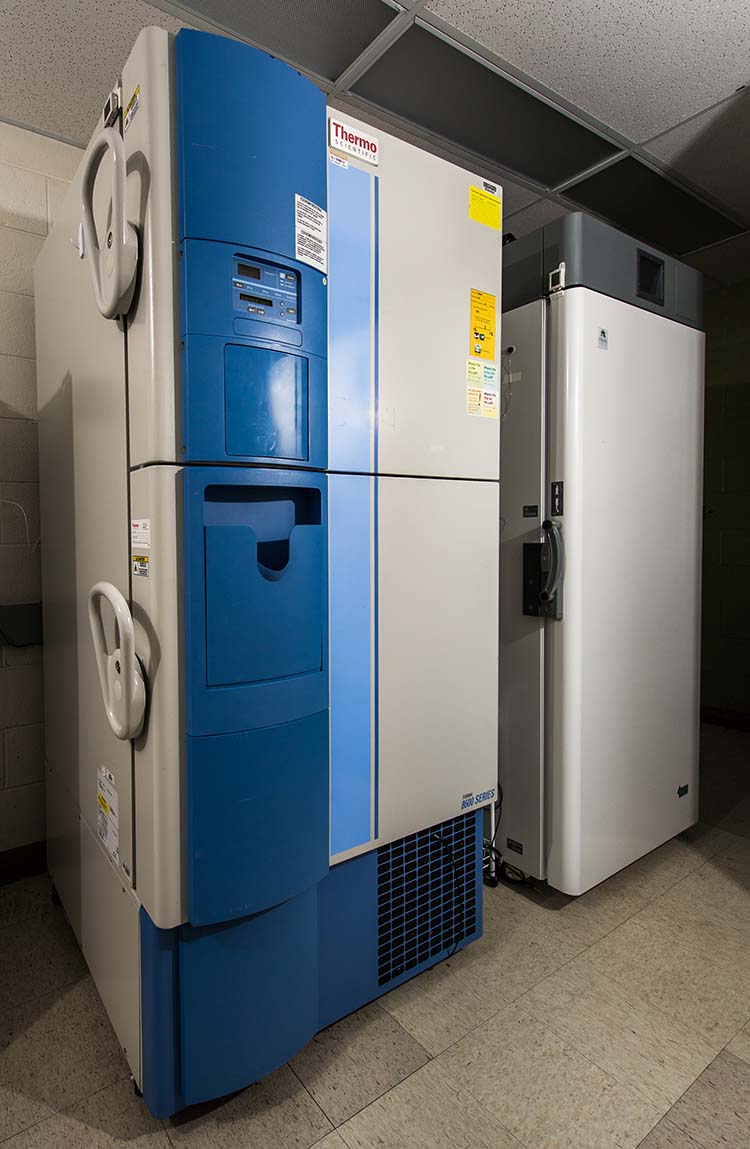University of New Hampshire Ultralow Refrigeration Improvement Project
On average, a conventional ultra-low temperate (ULT) freezer uses approximately 20 kWh of energy per day—as much as the average U.S. household. [1]
University of New Hampshire (UNH), the largest university in the state and an institution with a history of sustainability achievements, was home to 44 ultralow freezers across seven buildings—all of which were outdated, failing regularly, and expensive to repair. Compounding the issue, UNH's freezers were old and showing a decrease in efficiency over time due to seal leaks, refrigerant loss, degraded lubricants, fatigue in mechanical systems, and poor maintenance.
When the University Instrumentation Center (UIC), a group of engineers and scientists supporting research at UNH, realized this opportunity for improvement, UIC quickly developed a clear goal to establish a plan to proceed with a joint project to replace many of the aging ULT freezers on campus with environmentally friendly, highly efficient models to ensure safe and reliable sample preservation.
The team began by collecting data, building support, and establishing and evaluating a pilot program. During the data-collection phase, it was discovered that 12 of 27 freezers were more than 15 years old and that new freezers had not been purchased during the last seven years.
According to the UNH UIC team, each year of age translated to a 3% increase in energy consumption. Additionally, as a freezer ages the possibility of mechanical failure increases, which could inadvertently impact mission-critical research being conducted.

ULT freezers are the most energy-intensive pieces of equipment in a scientific research laboratory [2]
Photo credit: Dennis Schroeder / NREL
Using these insights, the team coordinated across departments to foster internal buy-in and began to research all ULT vendor information, current trends, makes, models, pricing, maintenance, and monitoring to establish a pilot program.
With shared funding provided by different university offices, the UNH team was able to purchase a new technology freezer for a four-month testing period. During this initial pilot phase, the new freezer's energy and temperature where monitored and compared to the previous freezer models. At the same time, the freezer was evaluated for its operability, reliability, and serviceability. After the initial pilot phase was deemed a success, UNH developed a memorandum of understanding to ensure the acquisition oversight and success of the program. Individual labs and personnel could then apply for an incentive to offset the costs of the more-efficient replacement ULT freezers.
As a result, UNH has purchased 18 new freezers, disposed of nine outdated freezers with an estimated energy savings of 80,000 kWh/year. UNH recognized $11,000 in savings after the first year.
A key to the program's success was securing internal buy in from the faculty and the dean's, energy, and sustainability offices. By isolating the vested interest of each entity, the UNH team was better able to leverage funding and support. Additionally, the UNH team recognizes the necessity of having a champion on board with the ability to influence others.
In 2019, UNH was recognized by the National Renewable Energy Laboratory and received the Accelerating Smart Labs Award for the university's continued success in replacing aging ULT freezers with high-efficiency models.
Interested in starting your own ultralow freezer program?
Here are some initial steps to take when developing your own program.
- Take inventory—audit your facility to understand the age of your equipment.
- Build a team and connect with relevant department or colleagues
- Create a plan and determine how to leverage available funding and establish a plan for upgrading equipment in the short and long term
- Conduct a pilot and build out final program/plan based on results